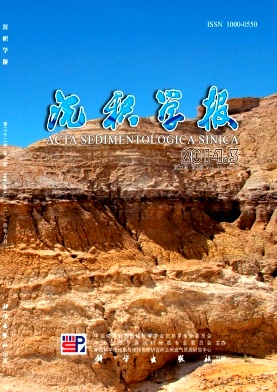Depositional Combination Characteristics and Distribution of Ordovician Carbonate Shoals in the Tarim Basin
- Received Date: 2013-01-21
- Rev Recd Date: 2013-08-12
- Publish Date: 2014-06-10
-
Key words:
- Tarim Basin /
- Ordovician /
- carbonate shoal /
- depositional /
- combination characteristics
Abstract: Based on outcrops, drilling and logging well data, seismic data and thin sections, carbonate shoals depositional characteristics have been studied and the results have been summarized as follows: the classification criteria of the carbonate shoals have been established, and four types of carbonate shoals (intraclastic shoal, oolitic shoal, bioclastic shoal and algae shoal) have developed in Ordovician; the sedimentary characteristics of the micro and macro Ordovician carbonate shoals have been integrated: the algal peloids, pellets and the algae clumps are the main components of algae shoals, and algae shoals are interbedded with algae crystalline dolomite; the content and shape of intraclastics shows the different parts of intraclastics shoals and their depositional environment energy, and intraclastics shoals have begun to develope in large-scale in the Yingshan Formation; oolitics shoals are mainly distributed in the platform marginal area of the Tazhong and Yubei area with a few other grains developed in the main part of oolitics shoals; bioclastics shoals are composed of the reef fragments and bioclastics, and are developed with the reefs complex, and mainly distributed in the platform marginal area and the margin area of inside adjacent platform. The bioclastic shoals have developed in the Yijianfang Formation. The GR value are low corresponding to the shoals formation, and the GR mainly shaped like box, funnel and bell in the shoals, while the finger and peak shapes are of the side part of the shoals. Furthermore, the shoals shows retrogradational migration from the marginal to the platform inside. According to the sedimentary characteristics, four carbonate stacking patterns have been established, including: algae-reef-shoal interbed, thick-layer cake aggradation shoal, and thin-layer cake retrogradation shoal, reef-shoal complex. Especially, algae-reef-shoal interbed and reef-shoal complex two stacking patterns distributions have been limited by the facies, but easily to form effective reservoirs, which have been proved in Ordovician of Tazhong area. The thick-layer cake aggradation shoals and thin-layer cake retrogradation shoals widely distributed in the Yingshan Formation. Therefore, combining the distribution characteristics and reservoir forming mechanism. It is conduded that the carbonate shoal reservoirs of the Yingshan Formation have distributed with regional advantages.
| Citation: | Depositional Combination Characteristics and Distribution of Ordovician Carbonate Shoals in the Tarim Basin[J]. Acta Sedimentologica Sinica, 2014, 32(3): 418-428. |






 DownLoad:
DownLoad: